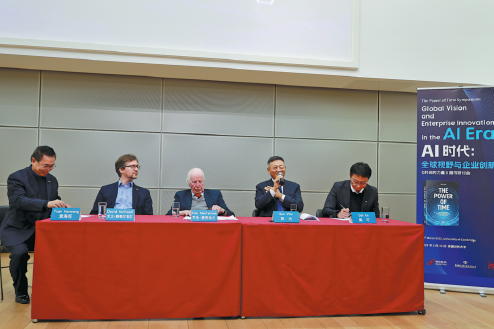How China's policy kit fuels consumer wallets


BEIJING — China recently unveiled a comprehensive policy package to boost consumer spending, reinforcing its commitment to making consumption a key driver of economic growth.
The 30-point plan aims to strengthen consumer confidence through a set of measures that include promoting income growth and reducing financial burden.
Analysts described the pro-consumption push as an innovative move that underscores the government's commitment to a people-oriented approach and its focus on investing in human capital.
The holistic initiative, which combines fiscal, financial and regulatory tools, aligns with priorities outlined in this year's Government Work Report, which positioned "expanding domestic demand" as a top priority.
A key aspect of the plan is its focus on tackling prominent constraints on consumption through three main measures: boosting spending power by increasing incomes and easing financial burdens; delivering high-quality supply; and fostering a consumption environment.
As the world's second-largest economy navigates domestic and external headwinds, policymakers are counting on the spending power of its 1.4 billion consumers to drive economic growth.
Central to the plan is an unprecedented emphasis on demand-side support to bolster household consumption capacity through measures that foster reasonable wage increases, expand property income channels and boost farmers' earnings.
For the first time in a policy document on boosting consumption, the plan explicitly highlights the importance of stabilizing both the stock and property markets, outlining targeted measures in a bid to "enhance spending power, stabilize expectations and strengthen consumer confidence".
"There's considerable focus on increasing both the capacity and willingness of households to consume," Lynn Song, ING chief economist for Greater China, said in a note.
The plan integrates consumption growth with improving livelihoods, introducing measures to ease household burdens in areas such as childcare, education, healthcare and old-age insurance, Li Chunlin, deputy director of the National Development and Reform Commission, said at a news conference following the release of the initiative.
Accordingly, China plans to explore a childcare subsidy system, increase fiscal subsidies for basic old age benefits and basic medical insurance for rural and non-working urban residents in 2025, and appropriately raise basic pension benefits for retirees.
The plan's increased focus on tackling livelihood problems aligns with this year's Government Work Report, which pledged to "direct more funds and resources toward investing in people to meet their needs".
Increasing fiscal spending on human development and social safeguards not only helps create a sustainable consumption expansion mechanism, but also reflects an approach where economic growth and the improvement of people's well-being mutually reinforce each other, according to Jin Li, vice-president of Southern University of Science and Technology.
In a broader push to bolster domestic demand, China renewed its consumer goods trade-in program, increasing funding from last year's 150 billion yuan ($20.67 billion) to 300 billion yuan through ultra-long special treasury bonds.
This year's initiative also extends subsidies to more electric gadgets and home appliances including smartphones, tablets and smartwatches.
The push builds on the success of 2024, where 150 billion yuan in subsidies generated over 1.3 trillion yuan in sales across autos, home goods, and electronics, highlighting the program's role as a near-term economic stabilizer.
Amid strong policy support, e-commerce giant JD.com reported a 13.4 percent year-on-year revenue increase in the fourth quarter, marking its highest quarterly growth in nearly two years, while its operating profit skyrocketed to 8.5 billion yuan, compared to 2 billion yuan recorded in the same period of the previous year, the company's latest performance report showed.
Xinhua




































